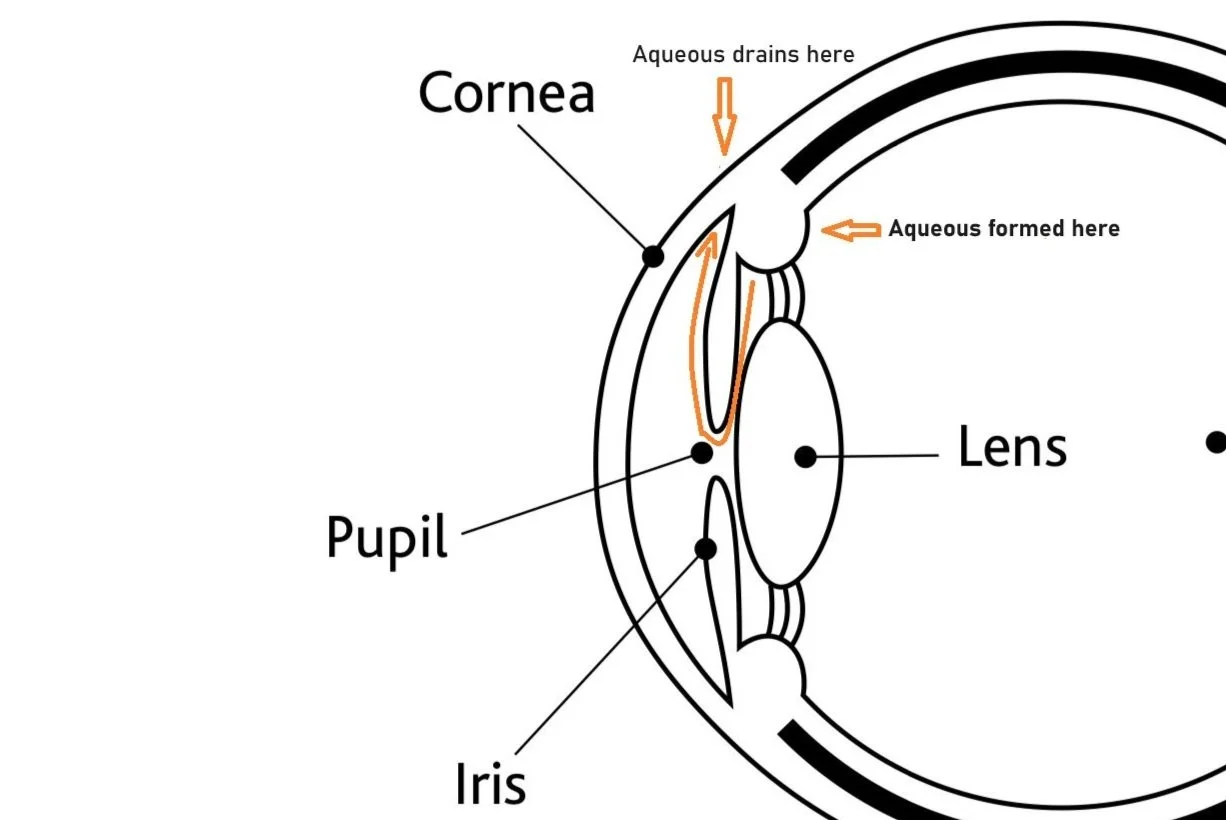How can we help with glaucoma concerns?
The optic nerve as glaucoma progresses.
We also have post-graduate qualifications in dealing with this disease and so are well equipped to help if you have any concerns about glaucoma.
For many patients with the condition, we can co-manage glaucoma with ophthalmologist colleagues. We are equipped with OCT, laser retinal scanning, photography, Humphrey visual fields and Goldman tonometry and can share all the data/information we obtain with your opthalmologist to obtain the best outcomes.
What is Glaucoma?
Glaucoma is a manageable eye condition. It is generally associated with an increase in the pressure in the eye and causes progressive damage to the optic nerves. Through early detection, diagnosis and treatment, you and your eye care specialists can help to preserve your vision.
Imagine your eye as a sink, in which the tap is always running and the drain is always open. The aqueous humor is constantly circulating fluid through the front of the eye. It is produced by a tiny gland, called the ciliary body, situated behind the iris (coloured part). It flows between the iris and the lens and, after nourishing the cornea and lens, flows out through a very tiny spongy tissue (0.5mm in size), called the trabecular meshwork, which serves as the drain of the eye. The trabecular meshwork is situated in the angle where the iris and cornea meet. When this drain becomes clogged, aqueous can not leave the eye as fast as it is produced, causing the fluid to back up. But since the eye is a closed compartment, your `sink´ doesn´t overflow; instead the backed up fluid causes increased pressure to build up within the eye. We call this open (wide) angle glaucoma.
Risk factors for glaucoma:
your age - glaucoma becomes more common as you get older.
your ethnicity - people of African, Caribbean or Asian origin are at a higher risk.
your family history - you're more likely to develop glaucoma if you have a parent or sibling with the condition.
other medical conditions - such as short-sightedness, long-sightedness and diabetes.
It's not clear whether you can do anything to prevent glaucoma, but having regular eye tests should pick it up as early as possible.
Diagnosing Glaucoma.
We have a variety of diagnostic tools which aid in determining whether or not you have glaucoma - even before you have any symptoms. These include:
OCT optic nerve laser assessment: The most advanced instrument available to us for very early diagnosis. It measures the thickness of the top layer of the retina, the nerve fibre layer, in microns. If this layer is different from the normative database, this indicates that there may be glaucoma. This is a very sensitive test and, by comparing repeated measurements year after year, we can determine if there is progression in the disease.
The tonometer: The tonometer measures the pressure in the eye. If we use applanation tonometry, your eye will be anaesthetised with drops. Then, you would sit at the slit lamp and a plastic prism would lightly push against your eye in order to measure your IOP. In air tonometry, a puff of air is sent onto the cornea to take the measurement. Since this instrument does not come in direct contact with your eye, no anaesthetic eye drops are required.
Visual field test: Testing your visual field lets us know if and how your field of vision has been affected by glaucoma. The visual field is an important measure of the extent of damage to your optic nerve from increased IOP. There are several methods of examination available. In computerised visual field testing you will be asked to place your chin on a stand which appears before a computerised screen. Whenever you see a flash of light appear, you will be asked to press a button. At the end of this test, your optometrist will receive a printout of your field of vision. Another test which is similar is the Goldmann perimeter. However, in this test, no computer is used. The examiner records your answers whenever you indicate that the light is in view.
Treating Glaucoma.
Glaucoma can be treated with eyedrops, tablets, laser surgery, eye operations, or a combination of methods. The whole purpose of treatment is to prevent loss of vision. This is imperative as loss of vision due to glaucoma is irreversible. Keeping the IOP under control is the key to preventing loss of vision from glaucoma. We, together with your ophthalmologist, have several options for doing so.
Routine eye exams are vital for protecting the health of your eyes. However, if we or your ophthalmologist detect glaucoma, early treatment should prevent the loss of your vision.



